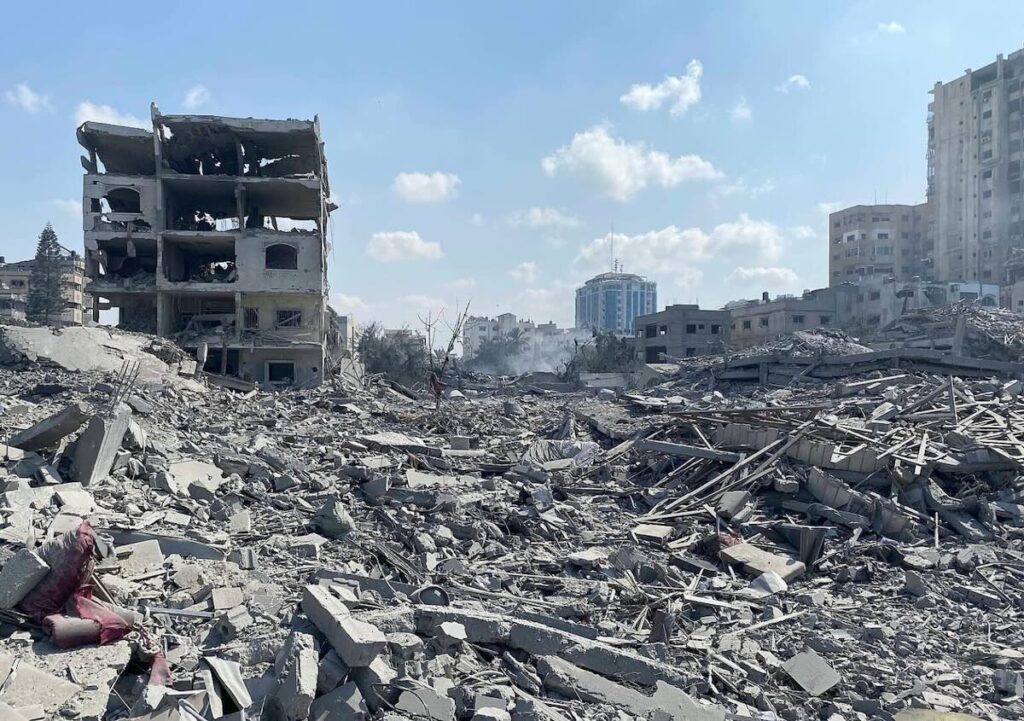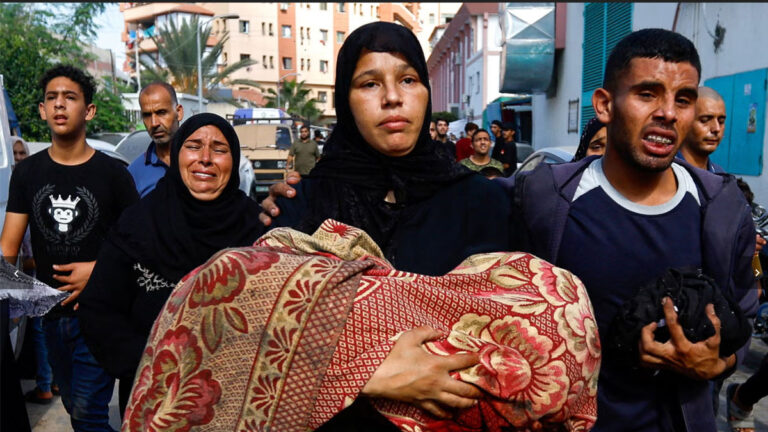September 2, 2024
By Spencer Osber
Submitted by Clear Actions contributor, Dr. John Marciano
Israel’s assault on Gaza has now officially surpassed the gruesome milestone of 40,000 Palestinians dead, but in counting only those killed in direct acts of violence that number captures just a fraction of the human loss.
“Most civilian casualties in war are not the result of direct exposure to bombs and bullets,” noted a 2017 studypublished by the American Academy of Arts and Sciences, “they are due to the destruction of the essentials of daily living, including food, water, shelter, and health care.”
This broader understanding of conflict casualties was applied to Gaza in a July study published in The Lancet, one of the world’s premier medical journals. The study found that at that time, it was plausible to assume that Israel’s military campaign would be responsible for the deaths of some 186,000 people.
The study found that at that time, it was plausible to assume that Israel’s military campaign would be responsible for the deaths of some 186,000 people.
-Lancet Medical Journal
To calculate this number, the authors started with the almost 37,400 direct deaths the Gaza health authorities had confirmed as of June 19, with Israeli intelligence services themselves deeming the authority’s counting reliable. The authors then cited a survey of armed conflicts over the last several decades that showed the ratio of direct to indirect deaths was roughly between 1:3 and 1:15.
In other words, for every person killed by direct violence in recent wars, another three to 15 died due to conflict-induced factors, mainly preventable diseases and hunger that resulted from losing access to healthcare, shelter, food, and clean drinking water. The Lancet authors then assumed a rather conservative ratio of 1:4 direct to indirect deaths in Gaza – 37,400 direct deaths plus 149,600 indirect deaths – to arrive at their estimate.

Notably, while Hamas’ October 7, 2023 attack on Israel killed more than 1,000 people, the direct-to-indirect casualty ratio is not applicable given that the wider Israeli population was not denied the necessities of life for any significant period.
In Gaza, the 1:4 ratio is conservative given that the Israeli air force has subjected Gaza to the most intense bombing campaign in history. In the first 200 days of the onslaught alone, the Israeli air force dropped 20 times more bombs per square kilometer on Gaza than the US did during nine years of the Vietnam War, previously history’s most intense bombing campaign that had itself dwarfed those during World War II. This has left most buildings in Gaza damaged or destroyed and 80 percent of the population displaced, often numerous times.
The Israeli army has also blocked most food, water, fuel, electricity, and humanitarian and medical supplies from entering the strip since October 7. Today, this has left almost half a million Gazans facing “catastrophic” levels of food insecurity, according to the UN, with more than 1.6 million people suffering from acute respiratory infections, jaundice, and diarrhea, 20 of the strip’s 36 hospitals inoperable and the remainder “partially functional.”
The impact of losing access to healthcare is starkly illustrated by the example of pregnant women in Gaza, estimated at 50,000 when the war began. Many have miscarried and are having stillbirths, faced C-sections with unsensitized equipment and without anesthetic, while increasing numbers of newborns are “simply dying,” according to the World Health Organization, because starving mothers are giving birth to critically underweight babies.
The Israeli campaign in Gaza – for which the world’s top two international courts are pursuing charges of genocide and crimes against humanity against the Israeli state and its leaders – has continued unabated since The Lancet published its study. With no reason to believe that the 1:4 ratio of direct to indirect deaths has decreased, the 40,000 Gazans now confirmed killed by violent means entails that the total deaths attributable to the Israeli campaign would be pushing past 200,000. That is 9 percent of Gaza’s pre-war population.
The Israeli army claimed in August that it had killed 17,000 Hamas fighters. While yet to comment on this latest assertion, Hamas itself has said previous Israeli statements of its losses were inflated by more than two-thirds. Regardless of which is closer to the truth, what the range makes clear is that combatants make up a fraction of the 200,000 total deaths for which Israel is responsible.
To properly place the Gaza death toll within the context of historical atrocities, consider that the first extermination camp the Nazis established during WWII, near Chelmno in German-occupied Poland, massacred at least 172,000 innocent people, while the atomic bombs the US dropped on Japan during the same war and their radioactive aftermath are estimated to have killed more than 210,000 souls.
Perhaps most tragically, Gaza Health Ministry figures show that of the 40,000 direct deaths reached by August, 41 percent were children younger than 18 years old. Children tend to be disproportionately affected by the harms of armed conflict. Thus, it is likely that the ratio of indirect deaths within this age bracket is greater than for the general population. However, using The Lancet’s 1:4 ratio as a baseline, it is plausible to assume that the number of children Israel’s Gaza campaign will be responsible for killing is at least 82,000.
For perspective, three children who were laid side-by-side holding hands would take up roughly a meter’s width on average. Some 82,000 children laid side-by-side would form a line over 27 kilometers long. An average person standing on a flat plain would see that line of dead children stretch from them to the horizon and well beyond. That person would have to walk for five and a half hours to reach the end of the line. The drive would take more than 15 minutes on the highway, traveling at 100 km per hour.
All that would apply if today the war ended. As of this writing, however, Israel was still bombing Gaza and blocking access to life’s necessities, thereby ensuring the line of bodies will continue stretching well into the distance.
This article first appeared on the Beirut-based Badil.
Spencer Osberg is a senior editor at Badil, a Beirut, Lebanon initiative committed to restoring the media’s crucial function to uphold political accountability.


